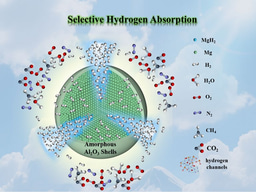
With the surge in energy storage for intermittent clean energy sources like wind and solar, as well as the booming of electric vehicles (EVs), lithium-ion batteries (LIBs) have been flourishing in recent years. However, this growth is also driving researchers to seek alternative technologies that are safer and more cost-effective. Zinc-ion batteries (ZIBs) offer distinct advantages over LIBs due to the higher abundance of zinc (52–83 ppm) in the Earth's crust compared to lithium (22–32 ppm), leading to lower costs. High-purity zinc metal costs range from $1.85 to $4.4 per kilogram, while battery-grade lithium carbonate costs between $5.8 and $80 per kilogram. Considering the price per equivalent (i.e., moles of electrons exchanged per mole of element), zinc costs $60.5-144 per kEq, much lower than lithium's $215-2957 per kEq. Zinc's established recycling industry, which meets about one-third of global demand, further enhances its sustainability. In contrast, lithium recycling is still developing, making zinc a more sustainable choice currently1. Additionally, when deployed in water-based electrolytes, aqueous zinc-ion batteries (AZIBs) offer intrinsic safety, making them even more attractive2.
Interestingly, AZIBs have exhibited anomalously high rate performance these years, the underneath mechanism of which has been overlooked. Specifically, in traditional ion-shuttle theory, cations (Mn+) shuttle between cathode and anode materials and through the electrolyte, fulfilling their charge/discharge roles and achieving energy storage efficiently. Within this frame, the charging rate of rechargeable batteries is associated with the charge-to-radius ratio (q/r) of Mn+. Generally, a higher q/r value results in a higher migration barrier and greater hydration enthalpy. The former makes it difficult for the ion to diffuse through the bulk phase of electrode materials, while the latter makes it struggle to cross the electrode-electrolyte interface. Thus, it can be well understood that Al-ion, Ca-ion, and similar multi-valent ions experience a slower charging rate (or rate performance) compared to that of mono-valent Li-ion or Na-ion batteries.
The strange thing is that researchers have developed numerous high-rate AZIBs that outperform other mono-/multi- valent aqueous metal-ion batteries (AMBs) in terms of rate performance. Notably, the superior rate performance of AZIBs surpasses what conventional ion-shuttle theory can predict. This serves as a hint—there must be undiscovered charge storage mechanisms in AZIBs. While researchers in AZIBs often attribute the high-rate performance to the contributions of H+/H2O/OH- insertion/pseudocapacitance, it's worth noting that H+/H2O/OH- themselves (or free H+/H2O/OH-) are not unique to AZIBs but are present in all AMBs. Consequently, Zn2+ must play a distinct role in enhancing the contribution of H+/H2O/OH-.
We shifted our perspective from AMBs to electrocatalysis, as H+, OH-, and H2O are fundamental components in both the oxygen evolution reaction (OER) and the oxygen reduction reaction (ORR). The reaction rates in electrocatalysis can far exceed those in batteries, potentially explaining the high-rate performance of AZIBs. Essentially, electrocatalysis predominantly involves near-instantaneous reactions linked to the adsorption of intermediates. Modifying the adsorption behaviour of electrodes towards these species can significantly impact reaction rates and products. Accordingly, it’s reasonable to infer that the adsorption of metal ions onto species in the solvent sheath can greatly influence their dissociation, generation, adsorption, and electron transfer. On the electrode side (E), the adsorption of species onto electrodes profoundly influences their behaviour. Given that *OH adsorption is prominent in both OER, ORR, and potentially in AZIBs, it's conceivable that the formation of OH- in AZIBs via water dissociation is a pivotal step. Thereby, high-rate charge storage in AZIBs can entail the continuous generation and reversible storage of OH- during the charge/discharge process. With the assistance of Zn2+, the kinetics of these processes can be accelerated significantly, providing a possible fast-charging pathway distinct from conventional ion-shuttle models and a plausible explanation for the anomaly in the rate performance of AZIBs.
To this end, we presented the catalysis model for energy storage: a water dissociation process and reversible adsorption of *OH for charge/discharge. Upon discharging, solvated metal ions transport H2O molecules to the electrode surface, facilitating electron transfer to the electrode. Analogous to the first OER step, H2O can undergo conversion into *OH and H+. Conversely, during charging, *OH can be released after capturing an electron from the electrode, similar to the final ORR step. Central to our model is the presence of an *OH intermediate, which controls the rate performance. In contrast to the ion-shuttle model, our catalysis model primarily involves the formation and breaking of HO-H chemical bonds within water molecules. The essence of our catalysis model lies in *OH adsorption/desorption, dictating the charge-transfer rate and rate performance.
How can we control the collaborative interactions between E-H2O and M-H2O to achieve even higher rates? Our results reveal that the water dissociation activity of solvated Mn+ and cathode materials can be quantified by their respective ionic electronegativity (IN) and d-band center. Expanding on this, we defined and calculated the *OH adsorption energy on various cathode materials and solvated Mn+ to evaluate the water dissociation activity in AZIBs. By exploring a large number of solvated Mn+/cathode materials, we plotted water dissociation activity against *OH adsorption energy for electrode materials (ΔG*OH(E)) and solvated metal ions (ΔG*OH(M)). Two distinct regions emerged: strong and moderate adsorption regions. The former exhibits excessively strong *OH adsorption, potentially leading to the formation of metal oxides or hydroxides. In contrast, the moderate adsorption region strikes a better balance between the *OH adsorption capacities of cathode materials and metal ions. Among the studied cathode materials, vanadium nitride (VN) stood out at the center, demonstrating optimal adsorption/desorption balance and rapid hydrolysis kinetics. Consequently, VN paired with Zn2+ was identified as a promising combination to achieve optimal water dissociation activity.
After confining nano VN clusters on reduced graphene oxide (rGO), we synthesized pure VN as the model predicted. Upon deployment in aqueous ZnSO4 electrolytes, the VN-Zn2+ combination effectively facilitated the storage process primarily through the reversible adsorption of *OH generated by water dissociation. We identified that the Zn2+-VN pair offered a near-optimal *OH adsorption/desorption process, achieving fast-charging performance — boasting a capacity of 577.1 mAh g-1 at a high current density of 300,000 mA g-1. Remarkably, in terms of energy and power densities, this catalysis-controlled charge storage delivered unprecedented values.
In summary, our study introduces a catalysis model for rechargeable AMBs. Diverging from the ion migration behaviour that dominates conventional ion-shuttle models, our catalysis model capitalizes on adsorption behaviour for charge/discharge processes. Central to our catalysis model is *OH adsorption/desorption during water dissociation, modulated by the synergistic interplay between solvated metal ions and cathode materials. The model-predicted Zn2+-VN pair delivered ultrahigh rate performance. This work not only enhances our understanding of aqueous batteries and expedites the design of fast-charging AZIBs, but also reinforces the critical role of catalysis in electrochemical energy storage.
References
- Innocenti, A., Bresser, D., Garche J. & Passerini S. A critical discussion of the current availability of lithium and zinc for use in batteries. Nat. Commun. 15, 4068, https://doi.org/10.1038/s41467-024-48368-0 (2024).
- Wang, Y., Wang, Z., Pang, W., Lie, W., Yuwono, J. A., Liang, G., Liu, S., D’ Angelo, A. M., Deng, J., Fan, Y., Davey, K., Li B., & Guo Z. Solvent control of water O−H bonds for highly reversible zinc ion batteries. Nat. Commun. 14, 2720, https://doi.org/10.1038/s41467-023-38384-x (2023).
Follow the Topic
-
Nature Catalysis

This journal brings together researchers from across all chemistry and related fields, publishing work on homogeneous catalysis, heterogeneous catalysis, and biocatalysts, incorporating both fundamental and applied studies.





Please sign in or register for FREE
If you are a registered user on Research Communities by Springer Nature, please sign in